Practical information: what are the producing areas of Guatemalan coffee? Description of the taste of Guatemalan coffee beans
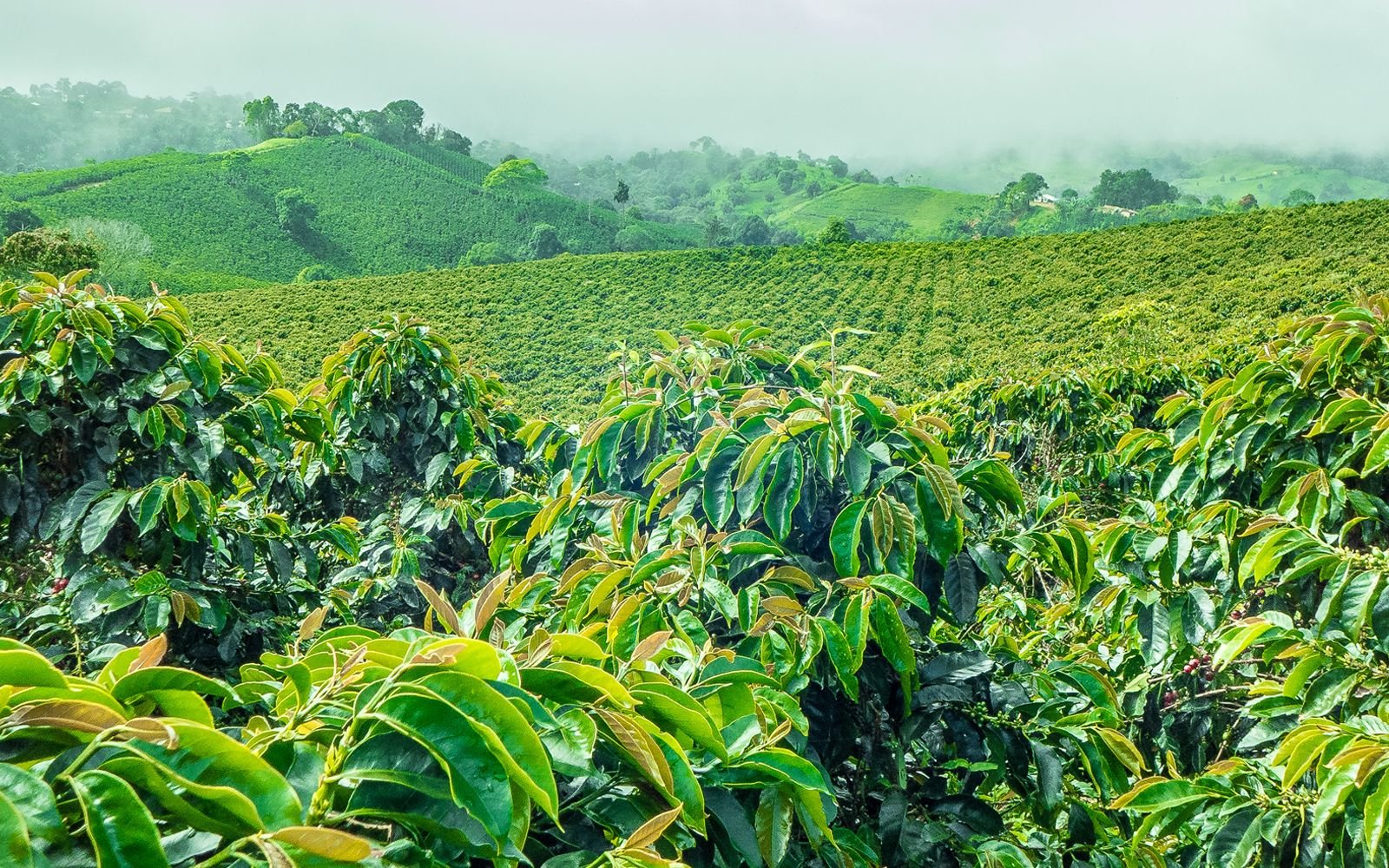
Although Guatemala is located in the tropics, because of its high altitude, mild climate, fertile volcanic soil and suitable humidity, Guatemala is an ideal place for coffee cultivation and one of the top coffee producing areas in the world. Coffee is mainly grown in southern Guatemala, and the excellent microclimate produces coffee beans with full grains, delicious taste and balanced acidity, with more than half of them being high-quality beans of high quality.
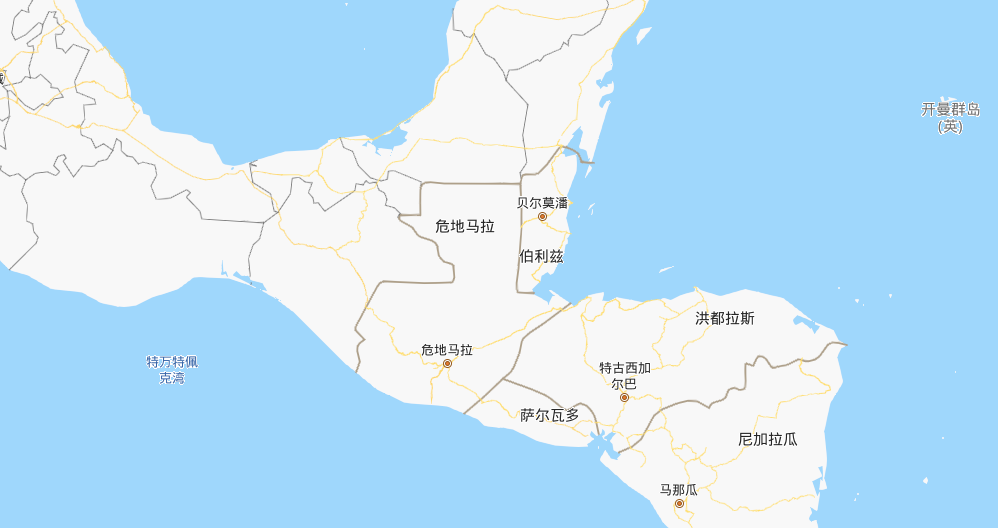
Geographically, Guatemala is bordered by Mexico to the north, Honduras and El Salvador to the south, the Caribbean to the east and the Pacific Ocean to the west, with tropical rain forests, volcanic geology, plateau valleys and changeable microclimate. 2/3 of the terrain in Guatemala is mountainous and plateau, covered by equatorial forests and plain jungles, dotted with rivers and lakes. The west and south belong to volcanic zones, with 34 volcanoes. The excellent quality of Guatemalan coffee beans is famous all over the world because of the unique conditions of its origin. These include different climate changes in each region, rich soil formed by volcanoes, abundant natural water resources, high-altitude mountains and shady and moist forests.
Guatemala has eight main coffee producing areas: Huehuetenango, Antigua, Atitlan, Acatenango, Coban, Nuevo Oriente, Fraijanes and San Marcos.
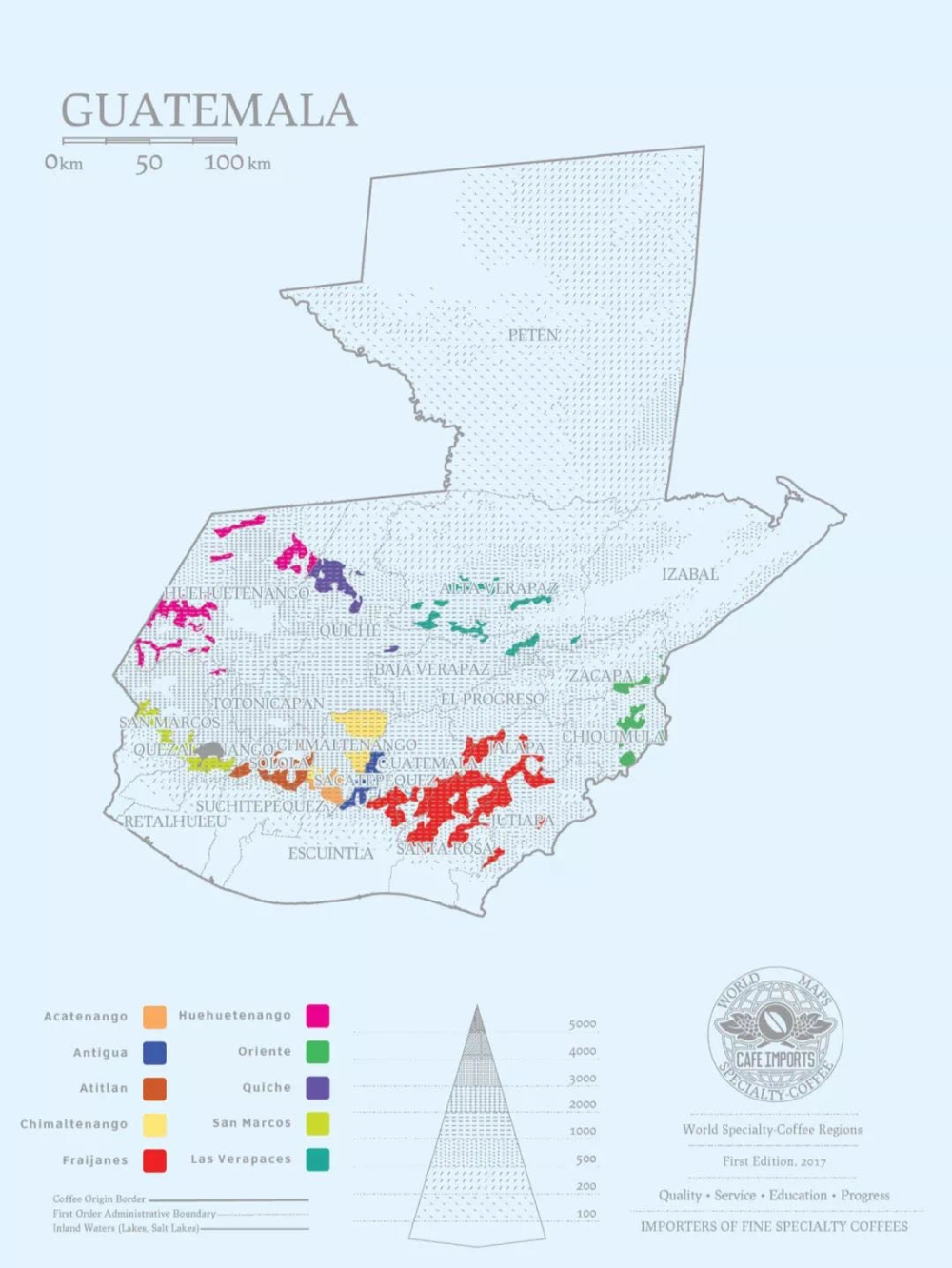
The coffee beans in each producing area have their own characteristics and have won a lot of praise for Guatemala in the international community. Especially in the Antigua producing area, the sour, sweet and mellow texture is so perfectly coordinated, with a hint of smoke and a little more emphasis on its mystery. Every 30 years or so, the area near Antigua is hit by a volcanic eruption, which provides more nitrogen to the already fertile land, and plenty of rainfall and sunlight make the place more suitable for growing coffee.

Here, the slopes of Sierra Madre volcano provide ideal conditions for growing high-quality coffee beans, and coffee growing at high altitudes is full of vitality. Compared with coffee beans from other producing areas, commentators prefer this kind of spicy coffee, and the extra-hard coffee beans here are a rare good coffee with full grains, delicious taste and balanced acidity. As a result, Antigua is the most award-winning coffee producing area in Guatemala and is the most well-known. On the front street bean list, there is a Huasheng coffee bean, which comes from the famous Antigua producing area, is washed and produced by Alaminita Manor.
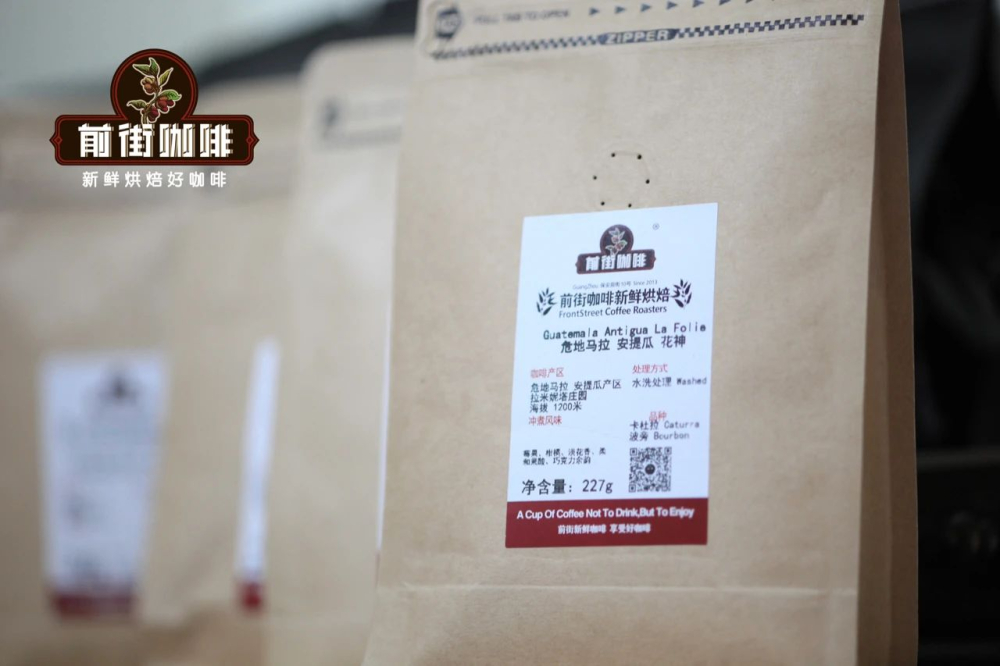
In addition to Antigua, Huehuetenango is also considered by the locals to be the best coffee producing area, with an altitude of 1500-2000 meters, bright and delicate acidity, flower aroma, fruit aroma, sweet toffee sugar and complex aroma, so it is known as "the crown of Guatemalan coffee". As a result, Qianjie will also wash Vivette Nanguo coffee beans as the facade representative of Guatemala, as Guatemala's entry-level food rations beans.
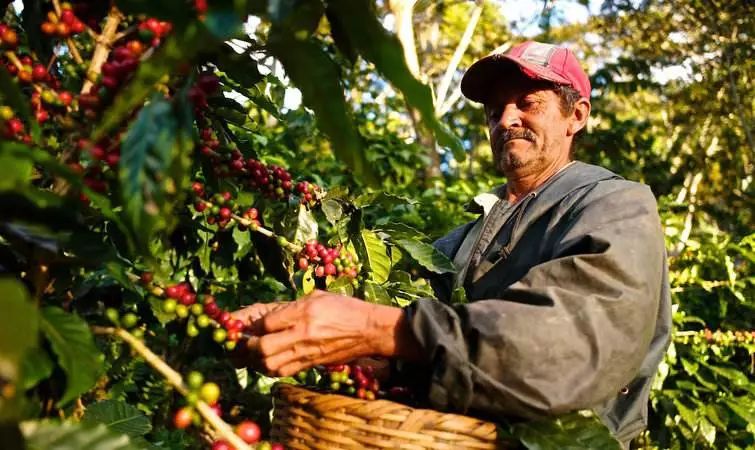
The Vivette Nanguo Highland is located in the western non-volcanic area with the driest climate and the highest elevation in Guatemala. Because it is located at the edge of plate boundary activity, under the ever-changing wind and soil conditions of the alpine basin, the flavor of coffee is also rich and varied. A dry, hot wind from Mexico is blowing in the northwest, allowing coffee trees to grow on a 2000-meter plateau. Each country has its own coffee grade standard. Raw coffee beans in Guatemala are mainly rated according to altitude. The higher the altitude, the higher the density of coffee beans and the higher the grade of raw coffee beans. The vast majority of coffee in Vivette Nan fruit producing area belongs to SHB extremely hard beans, and SHB is the highest grade of raw beans in Guatemala.
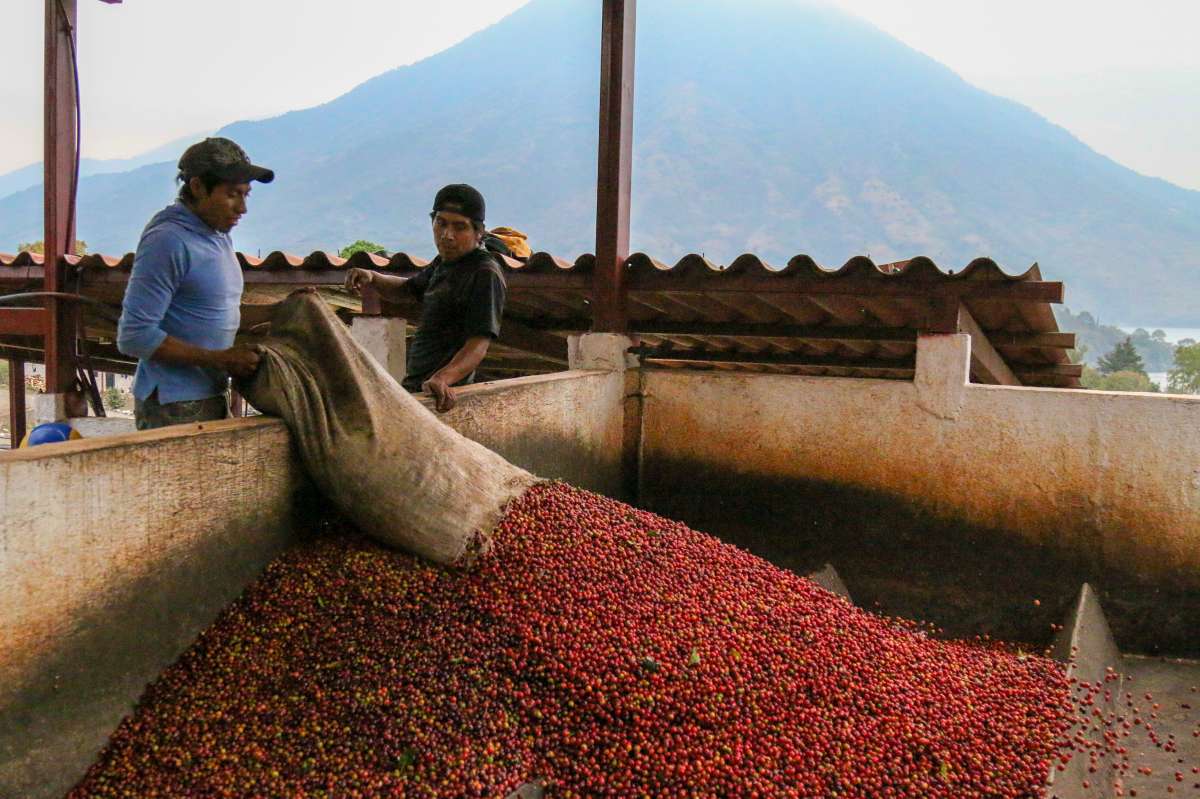
After the coffee beans were picked, the immature inferior beans were removed by flotation, and then the coffee cherry flesh was shaved off by the pulp screening machine, and then entered the fermentation stage. The purpose of fermentation is to separate pectin from inner beans by microbial production. Coffee beans will stay in the fermentation tank for 16 to 36 hours, after which they need to be washed and cleaned with a lot of running water. Finally, dry the inner beans until the water content is reduced to 1014%. Qianjie believes that washing not only reduces the defect rate of coffee beans, but also produces coffee with more stable quality and higher cleanliness, so it is also a favorite natural treatment in Qianjie.
Guatemala mainly grows iron pickup, Bourbon, Kaduai and other varieties, but also a small number of Rosa, Pacamara and other varieties. The Vivette South fruit rations in the front street here are selected from the mixed batches of Kaddura, Kaduai and Bourbon.
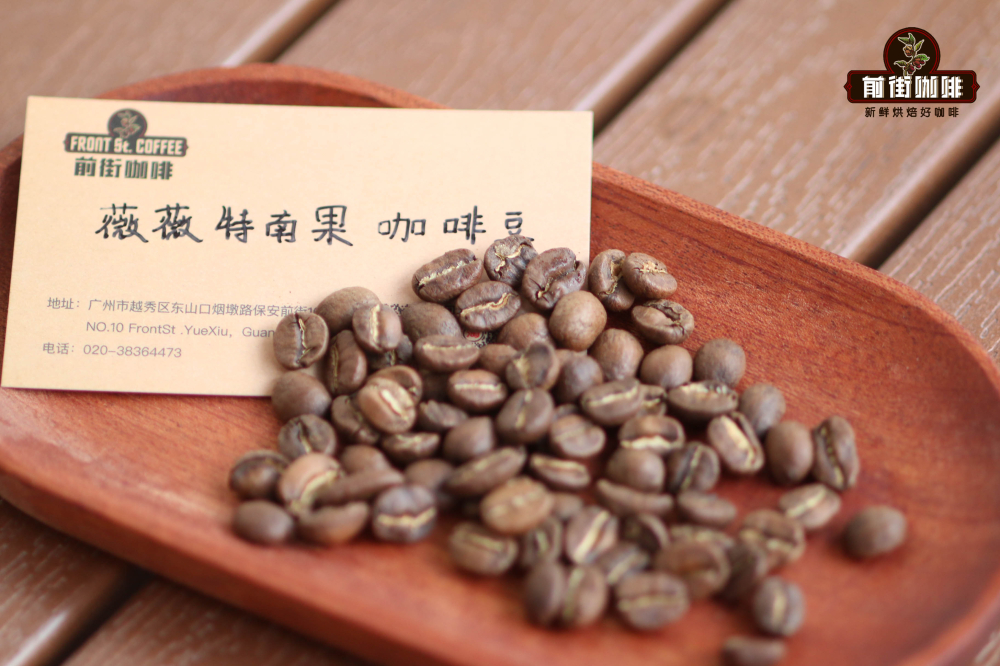
The roaster of Qianjie coffee chose medium roasting, and when testing this Vivetna fruit, he could clearly feel the tonality of nuts, the medium acidity of washing treatment, the flavor of berries when cold, and the medium lemon peel. If you want to taste the charm of Guatemalan coffee beans, Qianjie suggests extraction in the form of hand flushing, which can enjoy the rich and layered feeling of coffee.
Hand punch parameters of front street:
Filter cup: hario v60
Powder content: 15g
Water temperature: 90 degrees Celsius
Degree of grinding: pass rate of No. 20 screen 75%
Gouache ratio: 1:15
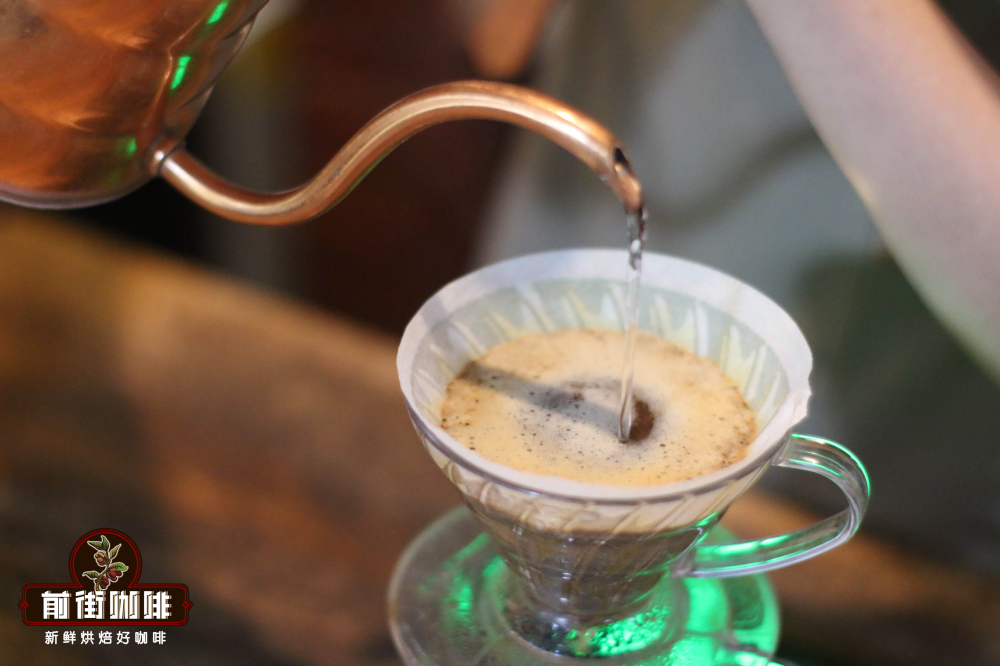
Three-stage water injection: wet the powder bed with twice as much water as coffee powder to form a drum and steam for 30s, then fill the small water from the inside to the outer circle to 125g, wait for the powder bed to drop to half of the filter cup, and continue to inject the same fine water into the third section to 225g, until all the coffee liquid has been filtered and remove the filter cup for about 2 minutes.
Professional coffee knowledge exchange more coffee bean information please follow the coffee workshop (Wechat official account cafe_style)
For more boutique coffee beans, please add private Qianjie coffee on Wechat. WeChat account: qjcoffeex
Important Notice :
前街咖啡 FrontStreet Coffee has moved to new addredd:
FrontStreet Coffee Address: 315,Donghua East Road,GuangZhou
Tel:020 38364473
- Prev
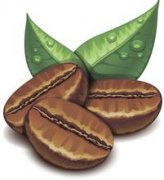
The top coffee farm in the world: the best coffee farm in Incht, high-quality coffee.
There are more than 10,000 coffee farms around the world, including coffee farms for popular coffee beans, high-quality coffee bean farms and rare coffee bean farms. Today, the editor introduces to you the Incht Manor, a famous top coffee farm in Guatemala. [manor introduction] Incht Manor is located on the Vivette Nanguo Plateau, a famous producing area of Guatemala.
- Next

Boutique coffee bean manor introduction: Costa Rican manor La Minita Raminita boutique manor
Just like the description of La Minita on Osher's website: it can be said that when discussing boutique coffee estates, Raminita is bound to be mentioned! In the cup testing courses of SCAA and SCAE in recent years alone, lecturers mention Raminita almost every time they list taste or high-quality beans, while La Minita not only sells well in Europe for more than 50 years, but also enjoys a high reputation in the American market! Go back now
Related
- Does Rose Summer choose Blue, Green or Red? Detailed explanation of Rose Summer Coffee plots and Classification in Panamanian Jade Manor
- What is the difference between the origin, producing area, processing plant, cooperative and manor of coffee beans?
- How fine does the espresso powder fit? how to grind the espresso?
- Sca coffee roasting degree color card coffee roasting degree 8 roasting color values what do you mean?
- The practice of lattes: how to make lattes at home
- Introduction to Indonesian Fine Coffee beans-- Java Coffee producing area of Indonesian Arabica Coffee
- How much will the flavor of light and medium roasted rose summer be expressed? What baking level is rose summer suitable for?
- Introduction to the characteristics of washing, sun-drying or wet-planing coffee commonly used in Mantenin, Indonesia
- Price characteristics of Arabica Coffee Bean Starbucks introduction to Manning Coffee Bean Taste producing area Variety Manor
- What is the authentic Yega flavor? What are the flavor characteristics of the really excellent Yejasuffi coffee beans?

